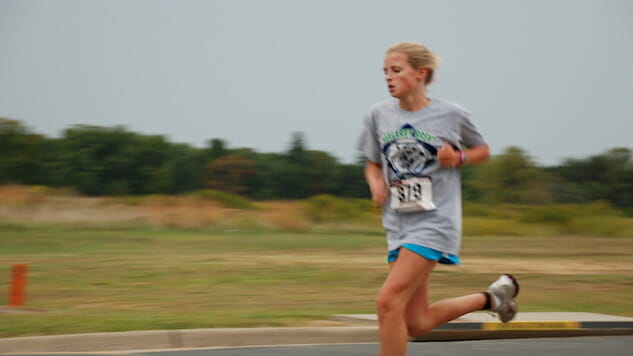Bodies in Balance: Running Injuries

It was mile 16 of my first and last long run when everything came to a screeching halt. The nagging knee pain that stopped me in my tracks had been increasing in intensity and frequency for a while, but I dismissed it as one of the “normal” side effects of training for a marathon.
Like many other fitness fanatics, recreational athletes and weekend warriors, I was experiencing an overuse, repetitive-type injury called iliotibial band syndrome (IT band) resulting from too much running and not enough strengthening, cross-training and stretching. And like many “Type A” personality types, my motto of: “Go hard or go home,” unfortunately landed me flat on my butt and on a break from running for quite some time.
What is the IT band?
The iliotibial band is a thick band that begins at the iliac crest in the pelvis, runs down the lateral part of the thigh, and crosses the knee to attach into the top part of the tibia or shinbone. The IT band helps stabilize the outside part of the knee through its range of motion. When irritated or inflamed, it causes pain and tenderness on the lateral or outer part of the thigh and knee and just above the knee joint.
Many people experiencing this pain, believe they have a structural problem with their knee, when in fact, the injury is a result of an inflamed IT band. In an interview with Paste Magazine, Dr. Paul Mostoff, Chief of Physical Therapy at NYC-based All Sports Physical Therapy, answers some of the more common questions runners have about IT band syndrome and other repetitive injuries.
Paste: What are some of the more common injuries associated with running?
Dr. Paul Mostoff: Running is a sport that uses a great majority of muscles in the human body. But the list of injuries that runners typically suffer from is actually fairly short…and repetitive. Repetitive is the key word, because most running injuries are the result of repetitive movement, constantly working the same muscles.
The most common injuries of course involve the lower extremities. Probably the most common one we see in clinic is Patellofemoral pain syndrome, sometimes referred to as runner’s knee. Essentially, this condition involves pain just under or around the knee cap, often caused by excessive mileage combined with muscle imbalances through the lower extremities.
Other common running injuries we see involve a variety of tendonitis- achilles tendonitis, patellar tendonitis, quadricep tendonitis. We also see IT Band syndrome, shin splints, plantar fasciitis, and stress fractures in the lower leg.
Paste: Why do people think they have knee problems when really what they are dealing with is IT Band Syndrome?
Dr. Mostoff: Unfortunately the knee joint is often the victim of what’s going on above or below that joint. Imbalances and restrictions above or below the knee change the dynamics and the way the forces are distributed through the knee joint during normal daily activities like walking, running, squatting or kneeling. This change in mechanics ends up pulling on the tissue around the knee joint and irritating it, thus producing inflammation.
-

-

-

-

-

-

-

-

-

-

-

-

-

-

-

-

-

-

-

-

-

-

-

-

-

-

-

-

-

-

-

-

-

-

-

-

-

-

-

-








































